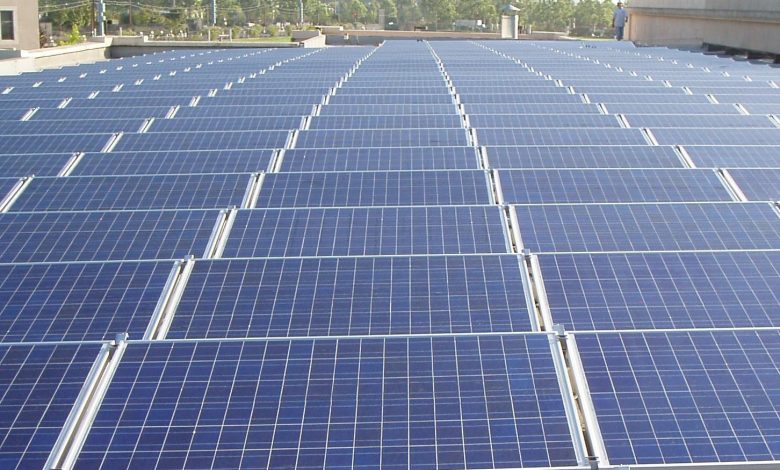
Solar energy is the cleanest, most sustainable way to generate electricity. It doesn’t require burning fossil fuels and reduces carbon emissions contributing to global warming.
However, the manufacturing process for solar panels could be cleaner. It produces a lot of silicon waste and uses additional energy, but this is being addressed in some ways.
Materials
Solar panels are made from a variety of materials. These include aluminum, silicon, copper, and glass.
Aluminum is a highly durable metal that doesn’t rust under sunlight or rainfall, so it’s ideal for the frame of solar panels. In fact, in 2018, it was the third most commonly used material in US solar installations.
Another common material is silicon, which makes up 95% of the solar cells sold today. It’s abundant, low cost, and relatively easy to optimize for the photovoltaic effect that converts light into electricity.
Most of the time, solar panels are made from monocrystalline silicon, which has a more organized crystal lattice and helps electrons move freely. As a result, it results in higher efficiency than multi-crystalline cells.
Other common materials used in solar panels in New Jersey are steel and tempered glass. These are both relatively inexpensive and easy to recycle after their useful lifespan.
Solar panels have a limited environmental impact because they use very little energy and raw materials to create their power. However, their end-of-life disposal and recycling process can be complex and expensive. In addition, their manufacturing process uses rare, heavy metals and chemicals that may be harmful if disposed of improperly.
Cost
The cost of solar panels has decreased significantly over the past decade thanks to increased efficiency and government incentives. However, the upfront costs of a solar system still vary widely depending on the size and type of panels you want to install.
Where you live also affects the cost of installing a solar panel system. In most cases, your solar panel installation costs will be higher in areas with less sunlight.
In addition, where you live will also determine your utility bill. It is because your energy provider charges you based on how much electricity your home consumes.
If you’re considering going solar, you must consider all your options and shop around. You can take out a loan or lease the panels, which can help you reduce your upfront costs and pay for the installation over time.
You can also buy a home with installed solar panels, which will save energy costs and help the environment. However, you’ll need to find out if your insurance company covers solar panels before you invest in one.
The cost of solar panels is typically lower than that of other power sources, and most homeowners recoup their investment in ten years or less. If you’re considering going solar, look for a local installer and check out the available incentives.
Environmental Impact
Solar power is an eco-friendly way to produce electricity. It’s free of dangerous carbon emissions and reduces the amount of acid rain that can harm plants, trees, and humans.
It can replace diesel generators used by remote communities to generate energy for their homes and businesses.
However, solar power does not work without sunlight and can be inefficient on cloudy days. It also takes a lot of lands to build solar facilities. It often leads to land degradation and habitat loss.
Many large-scale solar systems require water for cleaning collectors or cooling turbine generators, which can strain local water resources. In addition, chemical spills from solar facilities may contaminate groundwater and surface water.
There are also concerns about toxic waste from the manufacturing process of solar panels. Some PV cells and panels contain heavy metals that can harm the environment.
While solar power is considered a clean and renewable energy source, there are negative environmental implications. These should be factored into the decision-making process when developing new solar projects on Hawaii Island and worldwide.
Life Cycle
Solar panels are a renewable energy source that generates electricity without producing harmful carbon emissions. They also use less land than traditional fossil fuels to have the same amount of electricity.
A solar panel’s life cycle starts with the production stage when materials are harvested and processed into a product. Then, it continues through the delivery, installation, and recycling stages.
The process of manufacturing a solar panel is a complex one that involves the acquisition of raw materials, the processing of these materials, and the construction of the final product. It also includes the transportation of these products.
As solar power becomes more popular, there is a growing need for better ways to recycle solar panels at their end of life. As a result, the solar industry is proactively seeking new and innovative ways to make recycling these panels more environmentally friendly.
To do this, the solar industry uses a method called Life Cycle Analysis (LCA). It is a process used to assess the environmental impact of a product, from raw material acquisition and production, through the delivery, installation, and recycling of the finished product. It is a method that can help decision-makers choose the most environmentally-friendly manufacturing and recycling processes possible.



